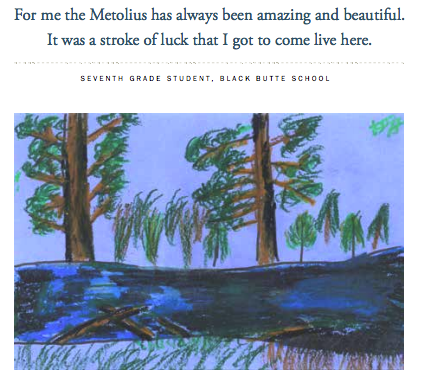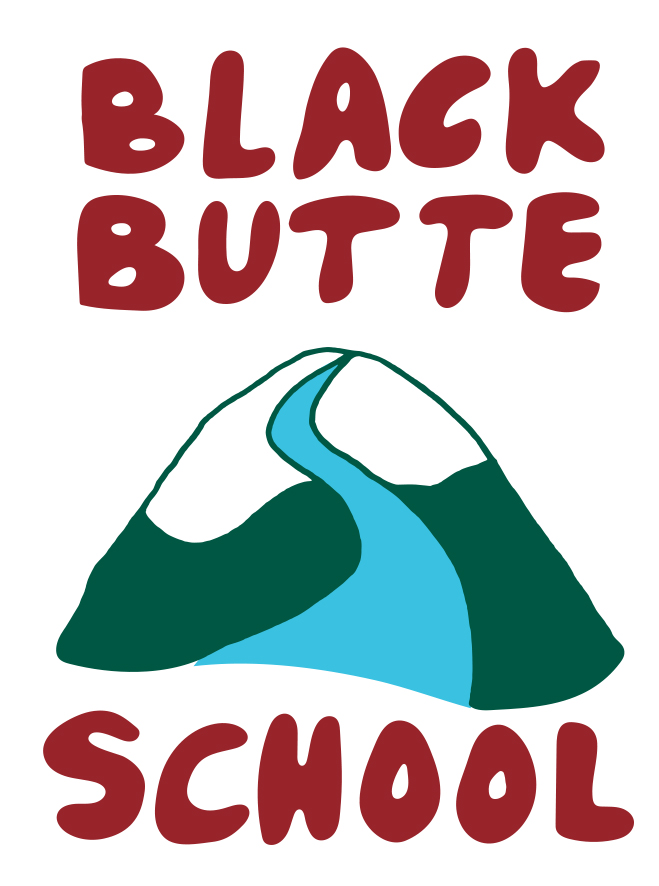Stewardship

A page out of the Metolius Outreach Brochure, created by Black Butte School students in collaboration with the Upper Deschutes Watershed Council in 2014
For example, each year in the field studies class students join staff from Trout Unlimited and the US Forest Service in a variety of long-term projects designed to benefit the ecology of the Metolius River. Students and staff plant native plants to restore eroded banks and release smolts into the river to enhance fish populations. Students learn about the science behind their projects in their field studies class and go out in the field to work with their hands. The partnerships with local organizations allow students to meet local science professionals and learn about the important work they do.
Another annual stewardship project benefits the people in Camp Sherman directly. Students rake the community bike paths in the spring to help people travel safely on the trails. Students also participate in a service day where they help community members in need with their yard work. These projects bring our community members closer to the school, as well as, enable students to get to know some of the key members of our community.
At Black Butte School stewardship is much more than a topic to study in the classroom. It is a value we try to live every day. By giving students opportunities to be stewards of their school, community, and environment we strive to build a generation of future leaders that will continue to care for this place for many years to come.
Thanks to Pete Blau of the Metolius Basin Institute for his contribution to the making of the video.
